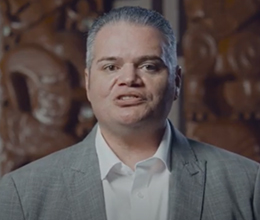First stages of the coronial process
When someone you know dies suddenly, it can be an emotional and challenging time - even more so when the circumstances are complicated, or the cause of death isn’t clear.
We hope that the below video will help to outline the first stages of the coronial process when your loved one’s death has been referred to the coroner.
Please note: this video is also available with te reo Māori captions.(external link)
The When someone dies suddenly factsheet [PDF, 196 KB] explains these initial stages in more detail, and the below FAQs may help to answer any questions you may have.
FAQs
- What is a coroner and duty coroner?
- What cases are referred to the coroner?
- How long will the first stages of the coronial process take?
- What’s the difference between NIIO and the Duty Coroner’s office?
- Will the coroner call me?
- What is a pathologist?
- What is a post-mortem?
- What are the benefits of doing a post-mortem?
- What will my loved one look like after a post-mortem examination?
- What happens if the coroner doesn’t order a post-mortem?
- Why were my cultural priorities not met?
- How can I contact NIIO?
What is a coroner and duty coroner?
A coroner is a judicial officer, like a judge, who investigates the causes and circumstances of a death and considers whether any recommendations can be made that might reduce the chances of deaths occurring in similar circumstances in the future.
A duty coroner is a coroner that is responsible for making decisions (for example, whether a post-mortem examination is needed) during the first stages of the coronial process.
What cases are referred to the coroner?
Under the Coroner’s Act 2006, if a death is sudden, unexplained, violent, appears to be self-inflicted, medically unexpected or happens in official custody or care*, it must be referred to the coroner.
*official custody or care is when the deceased was in prison, required to be in hospital for treatment, under a community treatment order, or under the care of Oranga Tamariki.
How long will the first stages of the coronial process take?
Although the first stages of the coronial process will often take 48 hours, for a variety of reasons it may take longer than that. For example, sometimes your loved one will need to be transported to another region for a post-mortem examination, which may add additional time to this process. A NIIO co-ordinator will keep you updated if there have been any delays.
What’s the difference between NIIO and the Duty Coroner’s office?
The National Initial Investigation Office (NIIO) is sometimes referred to as the Duty Coroner’s Office, and is part of Coronial Services. During these first stages of the coronial process, co-ordinators from NIIO will contact you on behalf of the coroner to discuss matters relating to your loved one.
Will the coroner call me?
Most of the time the coroner will not contact you directly. A co-ordinator from NIIO will contact you on behalf of the coroner.
What is a pathologist?
A pathologist is a specially trained doctor who examines bodies to identify the medical cause of death.
What is a post-mortem?
A post-mortem is an examination undertaken by a pathologist to try to find the medical cause of death. It can be either:
- a full post-mortem, which involves an external examination of the body, as well as an internal examination of the head, chest, and abdomen, and often includes taking blood, urine, and tissue samples, or
- a lesser post-mortem, which involves an external examination of the body or an internal examination of a particular part of the body, and sometimes includes taking blood, urine, and tissue samples, and possibly x-rays and CT scans.
For more information about the post-mortem, please refer to:
What happens during a post-mortem
What are the benefits of doing a post-mortem?
In some cases, a post-mortem examination may be crucial for helping the coroner to determine how your loved one has died, and may provide answers to questions you may have.
It’s important to note, unfortunately, even after a post-mortem examination, it isn’t always possible in every case to determine a cause of death.
In some circumstances, a post-mortem can identify medical issues that may affect other whānau.
What will my loved one look like after a post-mortem examination?
This will differ case by case and depend on both the nature of the death and the type of post-mortem directed by the coroner. Usually, the chest and abdomen will be examined by a Y style cut, and you can expect to see some small incisions on the head.
If your loved one is being collected by a funeral director, they will dress your loved one and the signs of the examination will be barely noticeable.
What happens if the coroner doesn’t order a post-mortem?
If the coroner upholds an objection to a post-mortem or directs the release of your loved one without a post-mortem, there will not be a further opportunity for a post-mortem after that time.
Why were my cultural priorities not met?
The coroner is committed to providing a culturally safe service that honours your cultural needs, and it’s important that the coroner knows how those needs can be met.
However, the role of the coroner is to investigate the causes and circumstances of a death, and where possible, make recommendations that might reduce the chances of deaths occurring in similar circumstances in the future. On occasion, this means that the coroner may have to make a decision when investigating the death of your loved one that cannot meet your cultural priorities. The coroner will take into account all information available to them before making any decisions.
Additionally, the coronial process comprises of elements that may prove to be challenging in honouring your cultural preferences. For example, sometimes your loved one may need to be transported a considerable distance for a post-mortem to be completed.
A co-ordinator from NIIO will explain to you if your cultural priorities cannot be met and answer any further questions you might have.
How can I contact NIIO?
You can contact NIIO by phone at 0800 266 800 or +64 4 910 4482 if calling from overseas.
This page was last updated:


